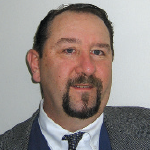William Mallon, MD, DTMH, FACEP, spent some 25 years at a Level 1 trauma center in Los Angeles—and that means he’s seen a lot of people do things for, well, no good reason.
Explore This Issue
ACEP15 Tuesday Daily NewsThat inspired his session at ACEP’s annual meeting: “Trauma Tea Party: Debunking Trauma Myths.”
“There are a variety of myths that have just been propagated by the way trauma systems have been organized since their origins in the ’70s,” said Dr. Mallon, who starts in November as director of the division of international emergency medicine at Stony Brook University in Stony Brook, New York.
“’That’s the way we’ve always done it!’ is really not an easy boulder to move. You need leverage to move that. Sometimes you need the pry bar and leverage of evidence-based management.” —Dr. Mallon
Dr. Mallon will urge emergency physicians to identify the best practices in trauma assessment and management and not just use techniques or ideas that are outdated. That’s easier said than done, however, when physicians are accustomed to, for example, a certain approach for airway management or the role of medication in rapid sequence intubation or the right chest tube to use in a given situation.
“‘That’s the way we’ve always done it!’ is really not an easy boulder to move,” Dr. Mallon said. “You need leverage to move that. Sometimes you need the pry bar and leverage of evidence-based management. Sometimes you need the pry bar and leverage of health care economics. Sometimes you need the pry bar of more collegial, combined approaches. Sometimes you need the pry bar of another specialty looking in. There are a bunch of different tools. But no matter which tools you use…it’s never an easy rock to move.”
Richard Quinn is a freelance writer in New Jersey.





No Responses to “ACEP15 Session: Overcome Myths in Emergency Department Trauma Care”